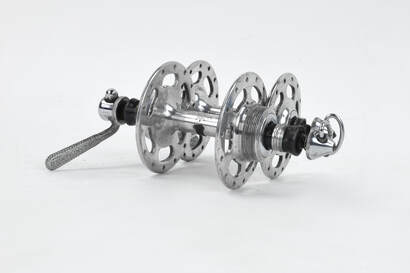 For all the bikes I've loved, most seem tough to part with, but who could imagine I'd long for a set of wheels I gave away. I’ve built about 40 sets of wheels, which is not impressive. This is a story about why that doesn't really matter. This happened, (of course), well prior to the commoditization of any real aftermarket wheel industry. In the mid 80’s before Lycra layered deerskin upon ones crotch; Music was generally upbeat, rap was charming, and smiling musicians (not "recording artists") courted listeners through music videos, with bad hair & giant fake gold necklaces. In that era of leather saddles, and Benotto Celo-cinta, one could either ask their local bike shop to build something for the track, or they got whatever came with the bike. Today, if you want to get yet another shrug from a tattoo'd millennial -- Ask at your local shop for something custom. Because there generally are no adults in the room, you will most certainly see them go fetch someone older who also shrugs and says, "let me show you these wheels over here". Thirty-odd years back, bikes had wheels, and riders were quite fast upon them, but Mavic & Campy just began to make inroads into the yet undefined "wheel" category, by making one off discs, and trial specific alloy wheels. Mere Mortals could actually buy a pair of plastic covers for spoked steel wheels to achieve "Aero". The plastic was the same stuff as the sled you own today, cheap, hard, and colorful. For Uni (image Below), fabric wheel covers were available, the cost was reasonable, but the benefit was not so scientific, per se. For Campy and Mavic discs, the cost of entry was stratospheric, (basically one-offs) To make this tech trickle down, we first needed to retire Reagan’s fantasy-land Star-Wars missile defense systems, and put more 'contractors' out of biz, so that a rusting war machine could shit out all sorts of defunct Carbon, Kevlar, & Metal-Matrix into the crochet gloved hands of an eager bike trade. We could now build magical 'Terminator' beings such as carbon shrouded discs, bouncy Spinergy's, Armored M2 frames, and henceforth an eruption of sticky resin, and metalurgy flowed into eager hands to bind it all together. ...But, we are getting ahead of ourselves. With little more than tires on offer, Specialized, (still the little "s") hadn’t yet made a Tri-spoke nor anything else for that matter. Life was simple. I was a simpleton waxing glamorous upon an early Aluminum Track Frame. I eventually owned two track bikes, and a custom Paramount from my friends in Waterford. Why a track bike?, mostly because I thought they were cool. Why a Paramount?, because they were certainly cool, and my friends built them. When cold, I would ride indoors on my polymer Rollers. Messengers still rode Ten-Speeds, and almost nobody talked about weight; yours or the bike's. Speaking of Cool... The cult of the Campy High-flange surely caught fire, and sustains by that elusive accolade. They are Cool. Before electric resistance trainers, Blackburn sold a ton of fan, and later “Mag Trainers” — which felt a bit like riding a Schwinn Airodyne, (possibly the only piece of exercise equipment in the general marketplace. Treadmills and Nordic Trac were a few years from their heydey). With a slipping clutch thing and no whirring turbo-prop sound, each crank rotation, felt the slip where the revolution exceeded the magnetic grab. Like the feeling of a skipping chain, or free-hub one felt at times they may "Let Go" and sail over the bars. Many who had the analogous real world launch experience, will share that a skipped cog spelled injury. These too wold come later, because in this period drama, only rollers, and bad fan trainers existed. It wasn’t a dark age, but it may have been a bit less sophisticated than the sophisticated pseudo-cycling dungeons of today. I dismantled a then Vintage set of high flange Super Record hubs from a pair of sticky Wolber sew-up hoops. Setting the old rims aside, I set about to polishing the hubs back to their factory shimmer. Two better Campy Record models existed; Nuovo had a small aircraft blued spring clip at the hub’s center sheltering an injection port. Super had only a fancy polished band where the clip had once been, boasting the Campy winged logo. Both were magical. This is a eulogy of sorts. Cathartic, Nostalgic, and reverent. There was no need to open the cone nuts on these hubs, nor to clean the bearings, but I took them apart anyway. I rolled tiny silver spheres through a rag in my hand, feeling each tiny ball until they also shined. If required, one could remove the inner races from most great hubs and press in a new set, but these hubs were perfect!...just the right amount of wear to glint a perfect polished silver track against a black velodrome upon which these balls rolled like mercury. Repacked with green Phil Wood grease, (I had no magic Campy lithium about the shop), I cinched the cones snug again, and spun the axle to gauge it’s freedom of movement. Truth be told the Phil wood grease was rather crappy both thermally, and for lubricity, which may explain why I have the same tube I bought in the late 80's. These newly shined-up hubs were perfect. I cleaned the rest of the Mother’s polishing paste from the spoke holes and counted out my new butted spokes. If you never held a Campy High Flange Hub, then buy a set and just set them upon your coffee table. They are magical unicorns, and even friends who don't own a bike will admit to their magnetism. Owing to a Herculean effort by Wheelsmith, one could reference a chart of spoke lengths against a known batch of available hubs and hoops to find a mas-o-menos proper spoke length for most 3-cross lacing patterns. 2 cross, and radial was a trial-and-error frontier, unless someone else had already built and shared their intel. Later "Spoke Calc" became THE database for every wheel-builder. So it makes sense as a bookend that the god father of Wheelsmith made his last big splash with a Carbon wheel design so radical became his undoing. That 'wonder wheel' was Mad Fiber. The thing was..., and I know it will sound impossible — but without the internet (which was not yet invented) ones’ ability to share trade secrets, and calculations with other Techs, was (well) limited. ipso facto, there was not that many hubs and rims to choose from in the early to mid 80's. Various custom frame builders, As well as DT, and WheelSmith lorded this technical intellect like ancient Illuminati, and the data was coveted -- if finite. Dropping each spoke through the drive side of my rear hub, I brought them one by one up to the rim staggering holes like hopscotch until one side held the hub to center. Lacing a wheel was, and remains a beautiful zen affair, like trimming a Bonsai, or spinning wet clay on a wheel. To lace a wheel is (at first) a bit like Japanese calligraphy, and as a right of passage I suppose, it delineated a matriculation of wrench craft. Or so it seemed to me. Any mechanic could bolt a pair or orange Mathauser pads to a Modolo caliper, and bend them to a perfect chatter-free gram, but few graduated to deftly making wheels, which endured. As with any specialty skill-set, burning a hole saw through some 531 tubes and brazing it to a Hank James Lug-set, was a more elite affair. Building some shelves vs. building a house... My first pair of custom wheels came to life from these High Flange beauties, and twin polished Araya deep rims. These magnificent, and coveted hubs were not born of style, but rather the perfect combination of form and function. If you search for them now, chances are good that they will cost you Five-X what they were new. I know the next criticism will be something about Sew-ups v. Clinchers, so I’ll just say that in general, clinchers were less available, and I got these deep Arayas for a song. ...And who doesn’t like the smell of Tubasti fumes in the morning? Gluing tires to rims was the adolescent graduation after the formative childhood of huffing Testors model glue, and Super Elastic Bubble Plastic. Beginning the second side I crossed each new spoke twice before it spun into its nipple. Some wheels we tinned and soldered, some we wrapped with epoxied fiberglass cord. All were tensioned and found their true by hand, one turn at a time. I’ve taught mechanics' classes and basic bicycle triage to many, but I never thought someone may want to obtain the secret skill-set of master wheel-builder. For every spoke wrench I sold, I knew that with or without tutorial, I would soon see the wheel it was plied to, and charge the same person to loosen, mend, and to true what they "Fixed". Truing a mangled wheel, much like fly-tying, is a Zen of sorts. Fine motor movement and nuanced pressure, amidst the CSI of hunting-down what the amateur wantonly ruined in a few minutes turning spokes. For anyone who rapidly fixed a wheel which someone hastily ruined twisting spokes, it becomes painfully clear that not everyone has the 'om' to hold a spoke key. On the road, or at a race, a quick truing leaves no time for contemplation. Rapidly loosening a few nipples, bending a broken spoke like a crazy straw around another, and pulling a few more tight will allow one to limp along. This mid-race triage is like performing a tracheotomy, brutal, and effective! (e.g. Stick the Bic-pen through a slit in the trachea, above the adam's-apple, and get them breathing again... gasp)! There is nothing magic about the operation, but most will walk the race, or worse, stop moving entirely without expert intervention. It's like seeing an optometrist, and leaving with clear vision... This deed warrants heavy gratitude. My new wheels would be special, not because they were technically compelling, but because I made them, they were shiny, and they would not easily fail. As with a new car, initially a force-field surrounds you, and you baby it, but after dinging the bumper once, you are no longer a petulant child when the next pothole consumes you. Today, when you get a new set of Rovals, DT Swiss, or Enve’s, you are giving a nostalgic nod to our forebear struggles. Hand-built in a factory, today most toss the proverbial spoke keys (and hence their paycheck) to the high tech factories where a skilled team re-checks what the machine began. Back when a discerning few would otherwise have had to seek out a guru for something special to roll upon, the options were finite, time-tables were longer, and the best testament to a great pair of wheels, was never thinking about them at all. Some come with a scribbled note saying "help help i'm slave in asian sweat-shop", while other's come with American Pedigree. All are generally awesome. Today, if we can afford them, we can simply pay for something extraordinary. Are they "Hand-Built" sure, and so is a Ford F150. Someone touches some part, and viola!!, "Hand built". In fairness, I have some Tune's (hand-built), Roval's, (hand-built), some Enve's (hand-built), and some Bontrager's (hand-built) and they all are wonderfully solid. In the "olden-days" however, wheels of quality which were 'hand-built' were rare -- More couture, than H&M. Today, wheels may be perhaps more Chipotle, than Michelin-starred; But they are way better than most which dropped between 1985 and 1995. When my wheels were laced, and the hub floated in the center, I'd set about to bed each spoke's "J"-end into the hub, and to flex each spoke until it seated well. Then, i'd individually tighten spokes as the wheel stiffened into shape. Rotated one-by-one, I enjoyed the process, but admit to seeming to have far more free-time then -- than I do now. If you've built a bird house, a table, or crafted an IPA from scratch, then you know the satisfaction of seeing something useful through from raw materials, to final product, (even if it was not as good as you'd pretended). In earnest, I think every cyclist should build a wheel-set, if only to experience & revere what a wonder it is that a few dozen pairs of razor-thin spokes can support a human and endure it's punishment. The bicycle wheel has gone though several fashionable changes, mostly for the heck of it, and of course to entice marketing tech and sexiness, but the principles remain the same. Two opposing sides pulling a rim upright like a suspension bridge. Giving it's due the larger miracle in The London Eye, which is basically what I'm talking about. The high flange hub shrank both the steep spoke angle and the length, but it really lives as an archetypal icon because of it's DaVinci-like Vitruvian proportions. Any vendor today who has the fortitude to offer replacement or even crash-replacement for their wheel buyers -- backing what they make; Is telling of their craft. Some brands make wheels of such praiseworthy quality here in the US as to deserve legend status. We take all factory sets the good & the bad, with skepticism; and so some factory wheels arrive with a wobble, while others never waiver under a Clydesdale. It's amazing in contrast that a simple build mistake, such as a single loose or unseated spoke, can rob us of a grand day out. From 1998 onward, good manufactures made such huge improvements to their process that we stopped needing to mind them much. We simply assembled the bike tweaked the brakes and shifters, but never touched a spoke. In 1989 the highest end bike one could buy (adjusted for inflation) was still half the cost of most nice wheel-sets today. The sky is the literal limit for brands such as Lightweight -- Which brings me to the payoff... Does a great wheel really make the bike? The short answer is yes... well kind of. Can a basic bike benefit from some sexy hoops? absolutely!! Can you ride better upon a climbing wheel? Ascend faster on a carbon rim? Ride Longer upon butted spokes?, Further with aerodynamics? ….yep. So what's more important the 'frame' or the 'wheel'? You of course know the answer. In all the sexy ooze of cycle marketing, our honest answer gets diluted in a messy mix of paint, carbon, status, and of course bullshit. Nearly nobody drives their SUV or Pick-up off road, Nor do they drive their sports car like they stole it. This doesn't stop us buying them. We are swooned by terrain ads showing an archetypal male (like you), smiling confidently fording a stream. These nostalgic sentiments are a strong magnetism. Most great bikes are exactly that fantasy. If you ride a lot are you doing so to prove to your spouse that you deserve six bikes? Or, do you have six bikes because N+1 is a quixotic bitch of an equation; and remember we don't even know the metric system. Have we weeded out the B.S.? nah... The mid-nineties Mountain-Bike boom was the SUV everyone could afford. Nothing more. We sold tens of thousands to people who would never see so much as a patch of grass. When we look at the epic road bike museum relics, which brought victory to Mercxx, LeMonde, or Hinault we should be in awe of their motor not (necessarily) their machine. If their iron diamond was good enough for their victories', then... well you could probably save a few thousand bucks and excel on anything built in 1990. Lets imagine the same athlete upon the same bike, but with a full two pounds removed from their wheel-set., and a few more from their frame... They used to say in F1 motorsport, that an ounce saved in the wheel equaled a pound from the body, and that is not so far from fact. When it comes to a hill, the advantage can be much greater. Mercxx used to pouch his bidon, or go without because he felt the frame weight slowed him down. Put another way, he said a fraction of his secret sauce was to remove every ounce from the bike..., and so it began. I always laugh at the guy at the gym with a tennis bag the size of a carry-on, I wonder if his game theory is to intimidate or impress the opponent with his massive bag -- or if he is compensating for something else. If I swing the racket poorly or fail to watch the ball when I serve, carrying five newly strung rackets, wont matter much. If you head to the sports store for a new racket, and buy one pre-strung, you may be surprised to know that the $69. special was last years best model. Because that mold was bought and paid for, like software, the first one cost a cool mil. and surplus blanks get repainted to be sold in bulk. This applies to Skis, Surf Boards, Swim Fins, and every fare of sporting craft. Every single one after the prototype is gravy for revenues. Congrats!! you just saved a thousand bucks, and your game will be the same with either choice. As with bikes, you can only ride one at a time, you are the engine, and the bike, while sexy cannot be magic, right? Well with a well chosen quiver you may actually ascend based solely on peer pressure. Choose reasonably, ride respectfully, and revere what you own within your limits, because you are you, and you are decidedly not that guy with the racket bag. Do your own thing, your own way, and be strong with the shit you own within your means. Don't show up with a 10-K bike and stand by the side-lines. Enter the race, and fail. If you place, then you can reward yourself with a new set of wheels. If you win they may hand you a set ...But doing it with a naf set of wheels, and you may do it better. Counting grams, I will admit (as a product of the public schools) was literally impossible for me, an ignorant 'imperialist' as the trend gained. I didn't know much about grams nor even how many 'kilos' I weighed, until cycling catalogs started showing me this data. Much like counting calories... if it works for you, so be it. It can't actually help you if you've no idea what the metric system is. Even-so, Gram fanaticism didn't matter until the mid-nineties. In fact it didn't matter whatsoever until I could afford to give a shit about it. I could ride just about any bike, and enjoy it until the great buzz-kill of gram counting grew like a boil upon cycling's back around 1995. Companies like Ringle, Control Tech, and Easton began a surgical strike to my bank account. This coincided with the invention of the ATM. This scam force funneled five dollar bills to fan flames of the "fantasy-football" of all eccentricities, gram counting... Sigh!.. And so, the Weight Wienie was born. (longer sigh!!.....) In-spite of all the sexy improvement to kit-and-bits -- It does all boil down to the rider, and perhaps a bad-ass set of wheels. My second set of wheels was just finished, and they shimmered, they were true, tight, and tough, and lasted me 12 years, I transferred them to a Canondale Track Frame, which I stripped and polished to mirror sheen. I rode them until I gave the bike to a guy who thought he'd need it to gain social status with the burgeoning crusty messenger-crowd circa 1994. Hold your next wheel apart from your bike, or for scary fun set it upon it's side like Rolf Dietrich, and stand upon the rim edges, while doing the "Twist". Note how a great wheel will support you even sideways, and when abused. Marvel at the unnerving apparent frailty, and then bolt it to the bike and do your level best to be a better rider, worthy of your wheels. You may excel without a wheel upgrade, but you will need to raise your game when you buy some. You should love them more when you respect their heritage, their allure, and their elegance. Kiss your mechanic if you've never had to think about the bike you abuse. Buy them a six-pack when they true the wheels you manage to mangle. If you never bother to consider your wheels, then maybe do that today. May the force be with you, wherever you are.
0 Comments
Leave a Reply. |
Age and Treachery will overcome youth and skill. Archives
January 2024
Categories |
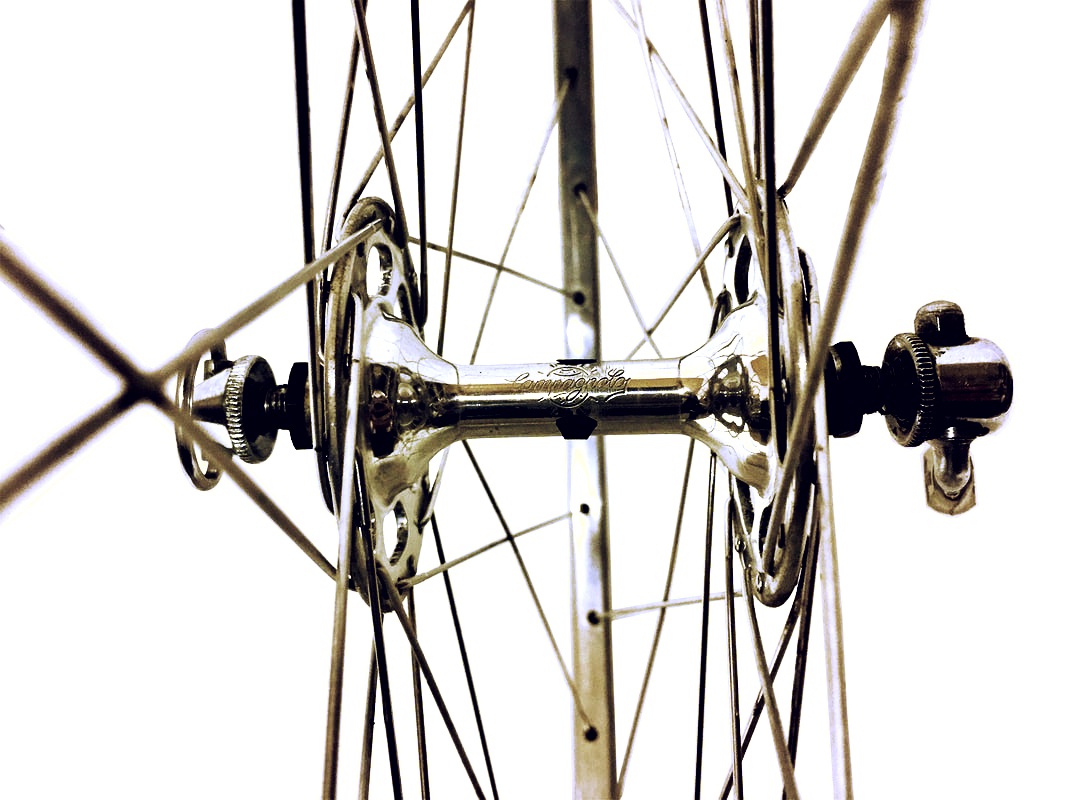
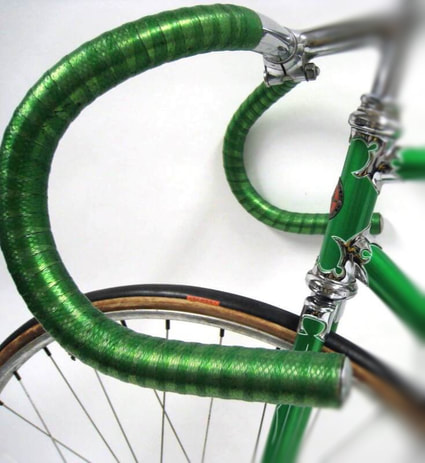
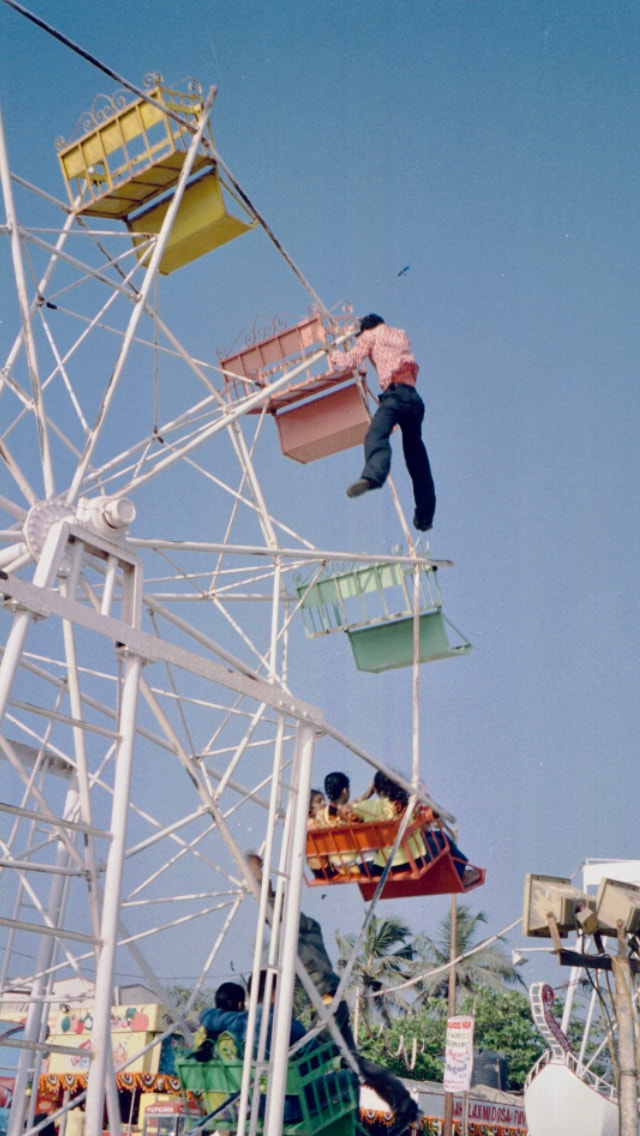
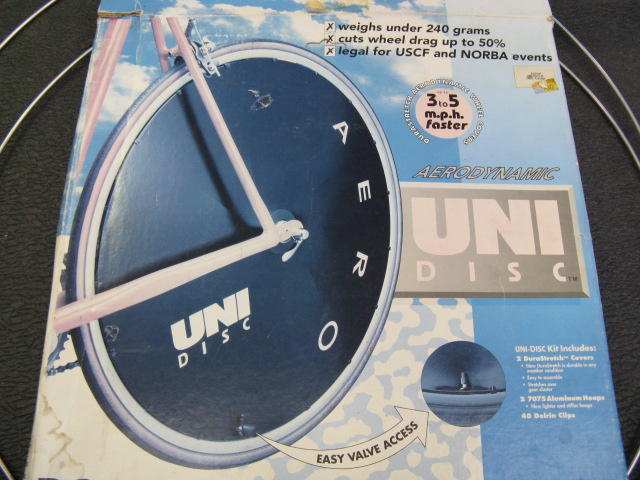
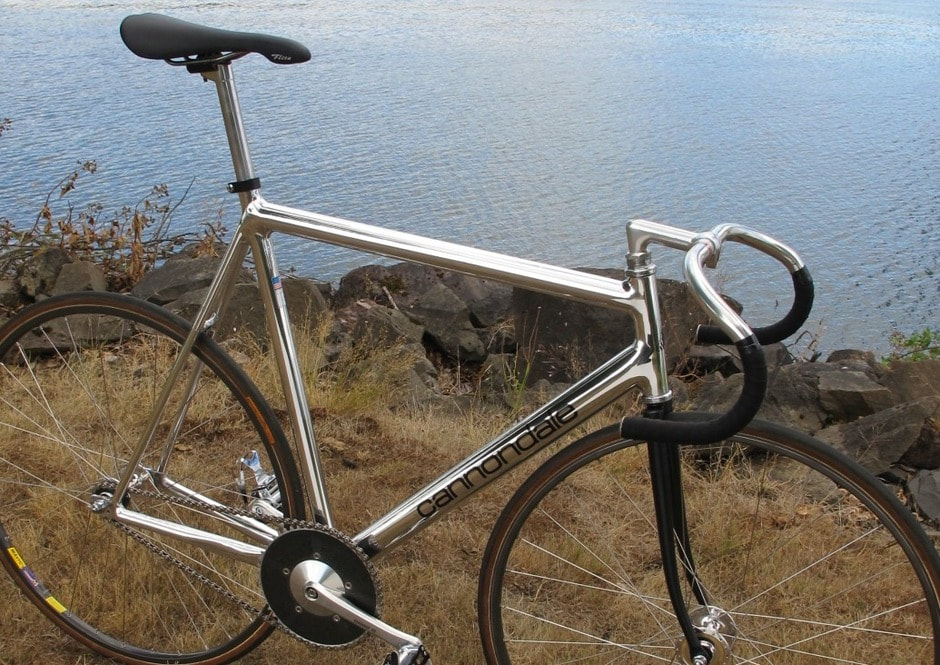
 RSS Feed
RSS Feed